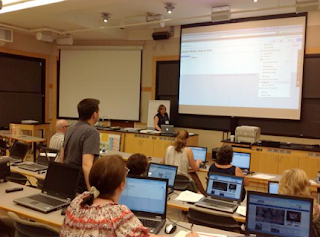I've taught for a long time, and I've dealt with a number of initiatives that haven't been well thought out--quick decisions without teacher consult or input that lead to countless hours of professional development and efforts that soon die out. So when I see an initiative coming my way, I think carefully about it. I consult the research, evaluate the amount of effort involved and most importantly analyze the potential impact on students.
Similar to what Hattie proposes for teachers and students in Making Learning Visible for Teachers, it's essential that initiatives include the following:
- Clear, communicated, accessible goals and rationale.
- Carefully chosen strategies for implementation.
- Analysis along the way, analysis of final results and next steps.
I'm a fan of streamlined, research-based systems that support optimal time-on-task work with students. I believe the larger share of a professional educator's time should be spent on direct service in addition to an adequate fraction of time spent on research and development. I do believe there needs to be leaders, but not that many--enough to keep the engine of a system motivated and flowing with action that matches vision and needs.
So believe me, I don't want to have to comment on so many issues related to my work as a classroom teacher, but the reality is that many systems and roles affect the job that teachers do every day. In some circumstances, a teacher's work, particularly at the elementary level, is belittled since people think it's okay to layer last minute changes, decisions without rationale and demands without truly thinking about the planning and care a teacher devotes preparing five to six lessons a day for 20plus students, the on-time instruction, the after school feedback/response and professional development. Teachers expect to do that work, and in an optimal situation the many roles that support and inform that teacher's role will provide lead time for decisions, rationale for efforts and communication about change.
Many teachers don't speak up even when issues ill-affect the work they do. Many have advised me not to speak up, but when I see the potential positive systems hold for promoting excellence in classroom teaching and student learning, I just have to speak up, and I'm reminded of MLK's words, "Our lives begin to end the day we become silent about things that matter."
How do you speak up when issues are proposed that may not serve the work you do in a positive way? What obstacles stop you from speaking up? How can teachers work to build streamlined, effective systems of support when it comes to the work they do each day and optimal changes that better effect student performance and learning? I'm interested.





















